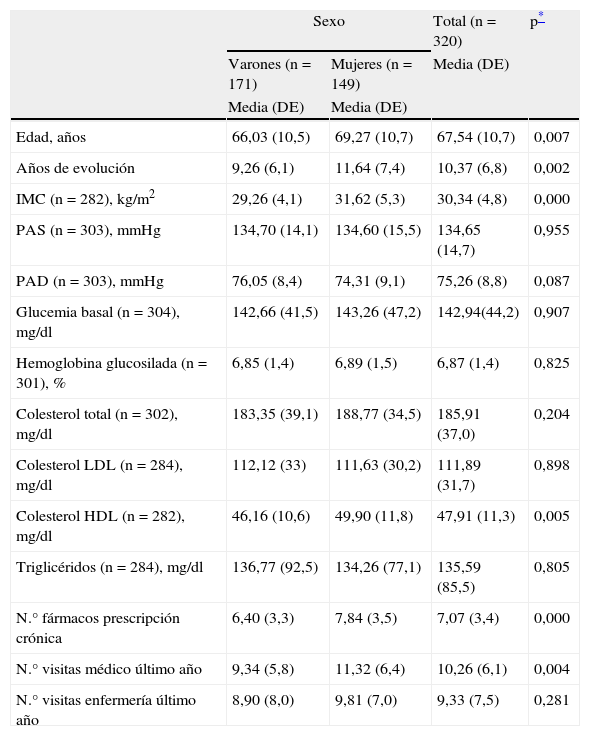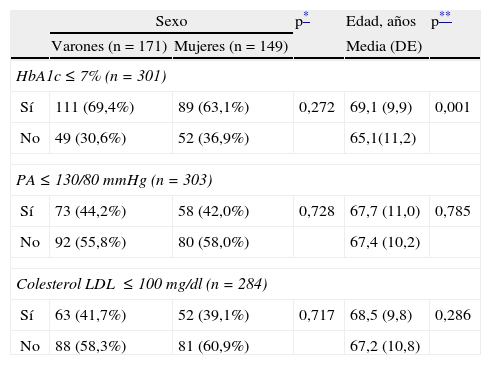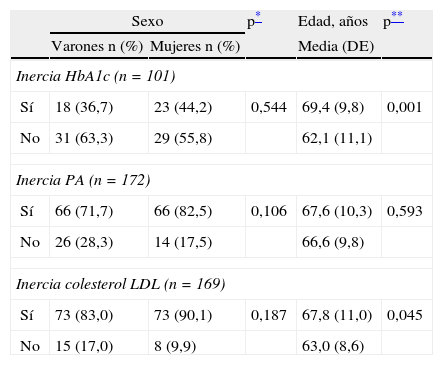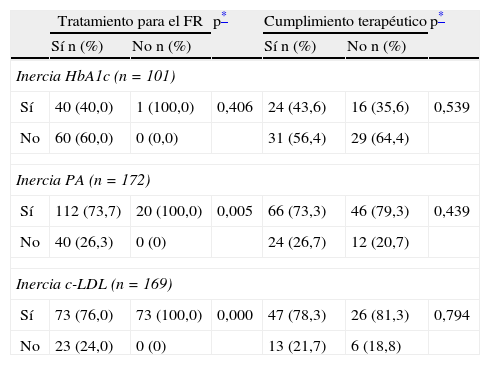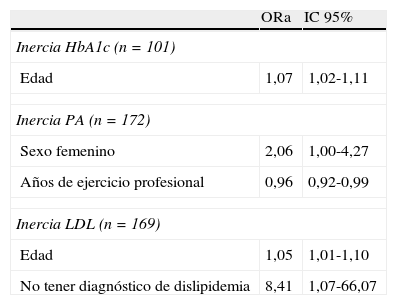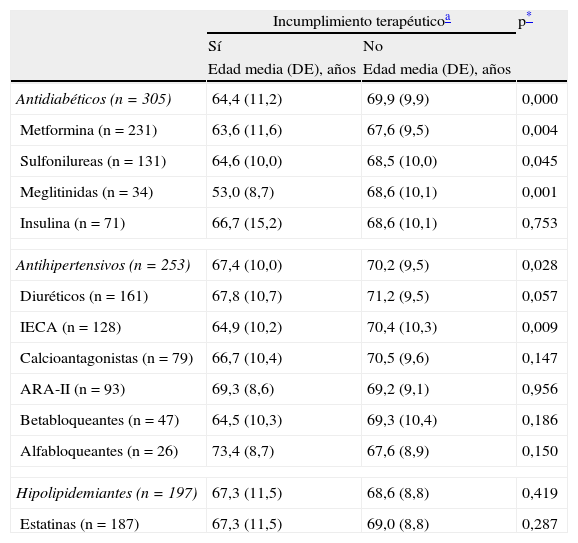La inercia terapéutica (IT) y el cumplimiento terapéutico (CT) limitan alcanzar los objetivos de control recomendados para los pacientes. Este estudio valora la IT y el CT en pacientes con diabetes mellitus 2 (DM2) en relación al control glucémico, la presión arterial (PA) y el colesterol unido a lipoproteínas de baja densidad (colesterol LDL), valorando la relación entre IT y CT.
Pacientes y métodoEstudio transversal realizado en atención primaria. Se incluyeron 320 pacientes diabéticos. Se valoró si cumplían los objetivos de control (hemoglobina glucosilada [HbA1c]≤7%, presión arterial [PA]≤130/80mmHg, colesterol LDL≤100mg/dl), si se incurrió en IT (ausencia de modificaciones en el tratamiento en caso de no cumplir los objetivos de control) y el CT (recuento de recetas retiradas de farmacia).
ResultadosUn 66,4% de los pacientes alcanzaron el objetivo de control para la HbA1c, un 43,2% para la PA y un 40,5% para el colesterol LDL. Se incurrió en IT en un 86,4% para el colesterol LDL, en un 76,7% para la PA y en un 40,6% para la HbA1c. El porcentaje de incumplimiento terapéutico fue del 36,1, 37,5 y 32,0% para los antidiabéticos, antihipertensivos e hipolipidemiantes, respectivamente. Los pacientes con mayor edad fueron mejor cumplidores. La IT no se relacionó con el CT. No hubo diferencias según sexo en cuanto al grado de control, la IT, la utilización de fármacos, ni el CT.
ConclusionesLa IT y el CT tienen un papel importante en la no consecución de los objetivos de control en los pacientes diabéticos, especialmente en la PA y los lípidos. El CT no se relaciona con la IT.
Therapeutic inertia (TI) and therapeutic compliance (TC) are 2 important barriers in achieving the therapeutic objectives recommended for patients with diabetes mellitus type 2 (DM2). This study analyzes the TI in patients with DM2 who do not achieve the glycemic, blood pressure (BP) and LDL-cholesterol (c-LDL) control goals, the patients’ TC and the relationship between TI and TC.
Patients and methodsThis is a descriptive study conducted in a Primary Health Care center. We included 320 diabetic patients. Objectives of control were HbA1c≤7%, blood pressure (BP)≤130/80mmHg, c-LDL≤100mg/dl, TI (when the objectives of control were not reached and the professional did not change the treatment) and TC (by counting withdrawals of pharmacy prescriptions).
ResultsThe objectives of control for HbA1c, BP and c-LDL were reached by 66.4, 43.2 and 40.5% of patients, respectively. There was TI in the 86.4% of patients for c-LDL, in 76.7% for BP and in 40.6% for HbA1c. The percentage of therapeutic non-compliance was of 36.1, 37.5 and 32.0% for antidiabetic, antihypertensive and lipid lowering drugs, respectively. Elderly patients were better compliants. TI and TC were not associated. We did not find differences in the level of control, TI, use of drugs and TC by sex.
ConclusionsTI and TC play an important role in the non-consecution of the control objectives in diabetic patients, especially regarding BP and lipids. TC is not related to TI.
Artículo
Comprando el artículo el PDF del mismo podrá ser descargado
Precio 19,34 €
Comprar ahora









